1. National Gallery
The National Gallery in London is a powerhouse of historical and European artistic mastery. It houses an impressive collection of over 2,300 paintings dating from the mid-13th century to 1900. Visitors can embark on a chronological journey through various art movements, from the Renaissance to the Dutch Golden Age. The gallery showcases seminal works like Van Gogh's 'Sunflowers,' Turner's 'The Fighting Temeraire,' and Leonardo da Vinci's 'Virgin of the Rocks.'1
The National Gallery's neoclassical facade complements the masterpieces within, offering a statement of cultural heritage. Strategic expansions like the Sainsbury Wing cater to modern tastes in display and curation. As visitors explore the rooms, they engage in dialogues ignited by the brushstrokes of genius artists.
The gallery offers guided tours and lectures that provide enriched storytelling, distinguishing newcomer appreciation from seasoned connoisseur ponderings. Whether you're an art student, enthusiast, or curious tourist, the National Gallery ensures every step is cast in the light of Europe's celebrated artists.
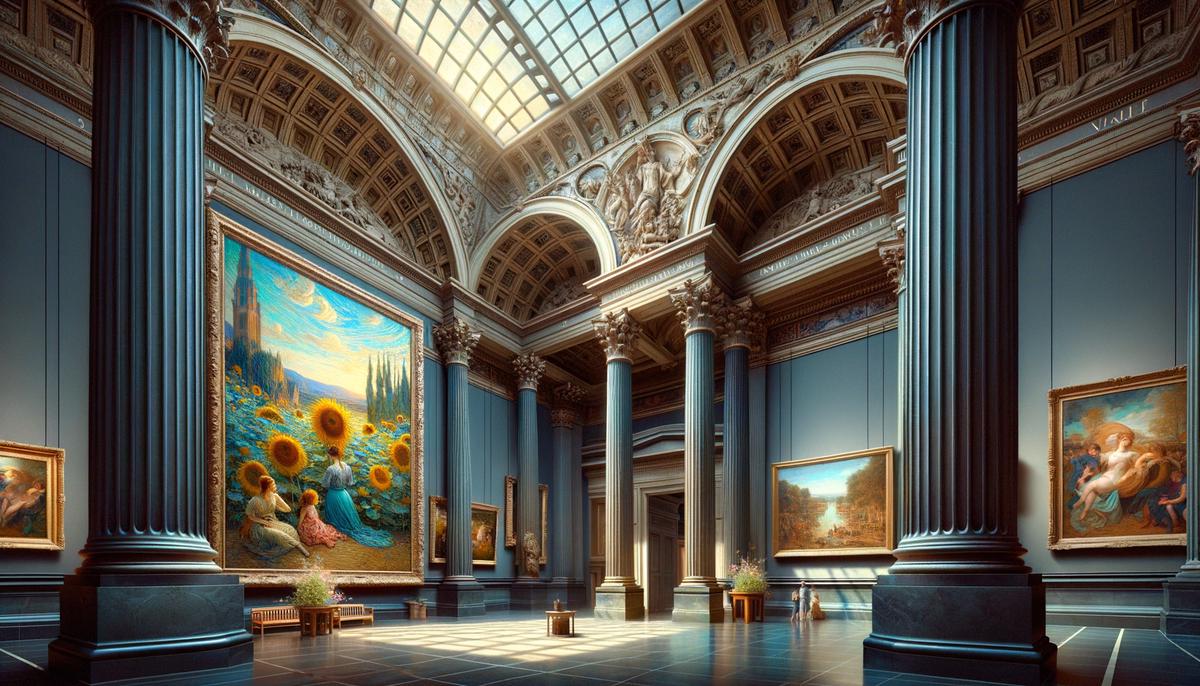
2. Tate Modern
Tate Modern, located in a former Bankside Power Station, is a beacon of modernism on the Thames riverbank. It presents a tapestry of creative expression, from the early 1900s to today. The Turbine Hall hosts large-scale commissions from provocative artists, while intimate viewing rooms house pioneering works by Matisse, Picasso, and Dali alongside contemporary artists like Ai Weiwei and Tracey Emin.
Tate Modern is an interactive arena where the public participates in reshaping modern art through engaging workshops and art talks. Live performance art pieces ensure visitors witness art that breathes and reacts. The gallery's expansive collection highlights international avant-garde groups, pushing creative boundaries and encouraging questions about societal representation in art.
Whether it's digital art displays or visceral collages, Tate Modern fuels an undying love for contemporary explorations. As the gallery's exhibitions shift and change, it proves that in this sanctuary of art, the only constant is transformation.
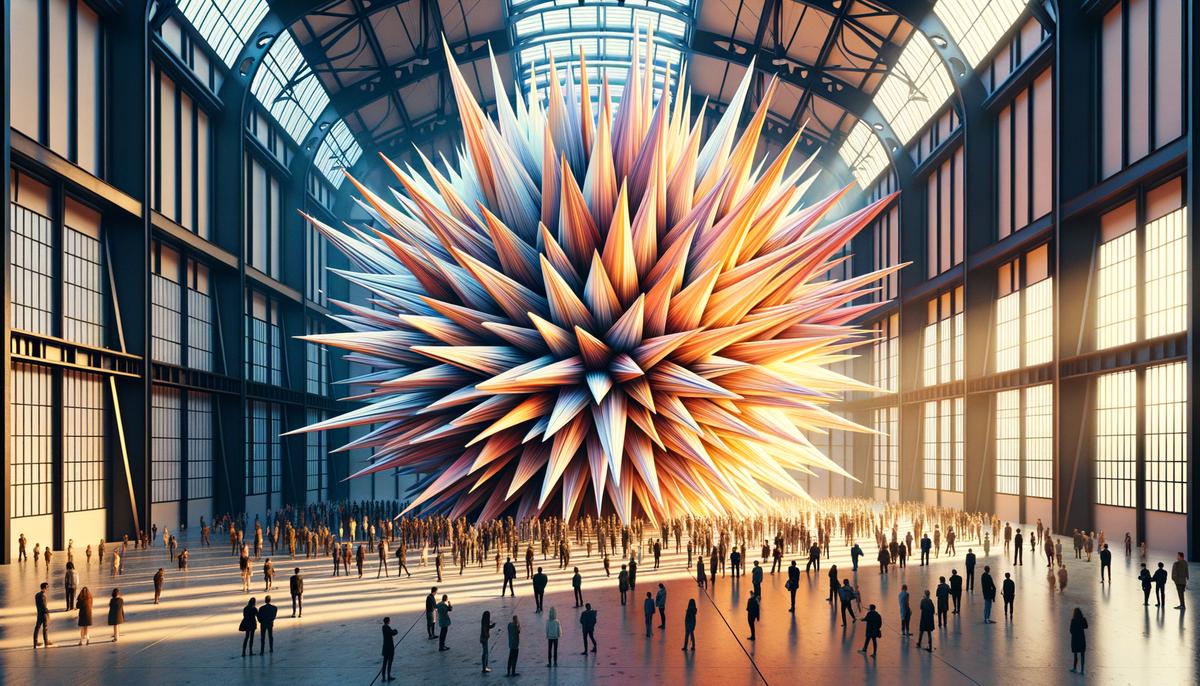
3. Saatchi Gallery
The Saatchi Gallery in Chelsea is known for its audaciously curated contemporary exhibitions that provoke, delight, and challenge visitors. It embraces its role as a disruptor in London's art circuit, focusing on artists who haven't yet achieved widespread fame. The gallery showcases a panoramic range of talent, often featuring works that ripple through modern cultural debates and offer fresh perspectives.
While deeply rooted in showcasing breakthrough talent, some halls of the Saatchi Gallery flashback to infamous art that rattled the cages of established norms. The gallery also embraces digital art, offering sensory experiences where visitors become participants, stepping inside creations spun from contemporary clatter and digi-tech toy boxes.
A stroll through the Saatchi Gallery is an urban pilgrimage to one of provocations' modern sanctuaries. It serves as a stir-stick in London's prime cultural elixir, agitating fine art's international waters and bolstering the city's artistic palette.
4. Whitechapel Gallery
Whitechapel Gallery, located in London's East End, has been shaping the contemporary international art spectrum since the dawn of the 20th century. This pioneering gallery has rolled out the red carpet for stalwarts like Pablo Picasso and Frida Kahlo, while also setting the stage for contemporary giants like Mark Rothko and Sophie Calle. It serves as a cultural catalyst, igniting the careers of lesser-known artists.
Wandering through Whitechapel Gallery is an artistic quest that is both satisfying and mildly bewildering by design. The gallery's renowned education and community programs demystify contemporary art, inviting stakeholder communities to engage, reflect, and shape the dialogue within its spaces.
Each room bristles with the invisible energy inherent in boundary-pushing artworks, arranged thoughtfully to challenge perceptions and encourage profound contemplation. Whitechapel Gallery's historical architecture tells a story of resilience and adaptation, symbolizing the kinetic dialogue between the industrial and the divine.
As visitors drift from room to gallery space, left in quiet awe by installations or stirred by assertive brush strokes, they partake in a rich, undulating narrative that's deeply stitched into London's artistic heart.
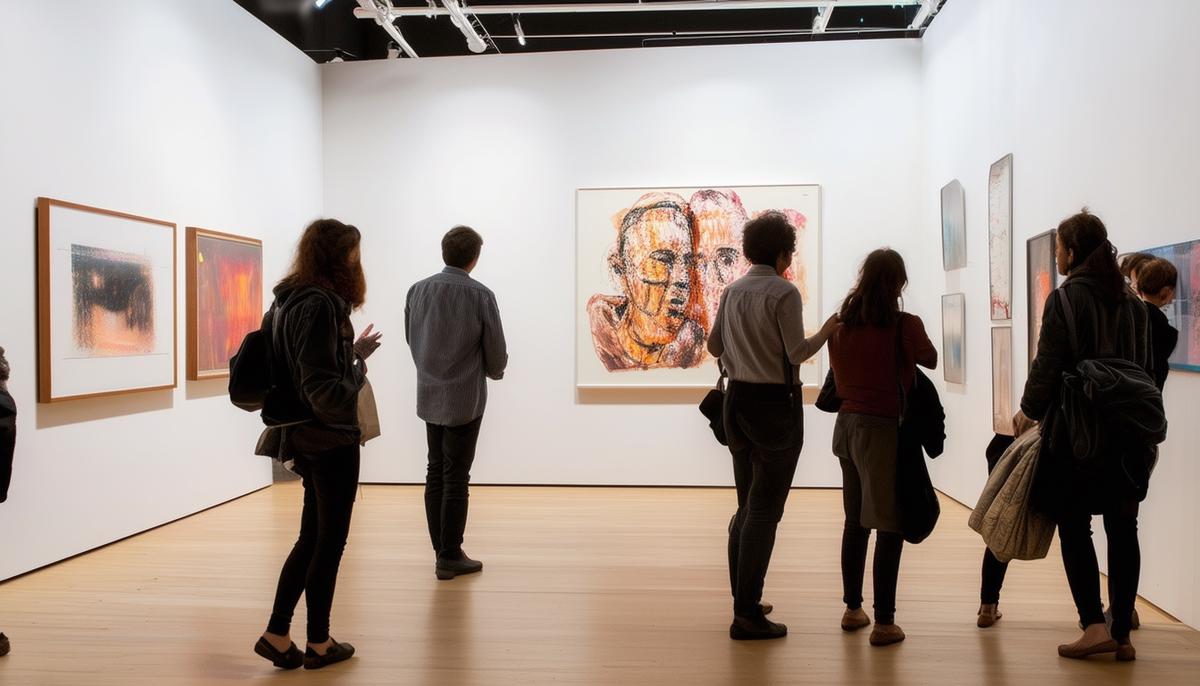
5. The Royal Academy of Arts
The Royal Academy of Arts, founded over two centuries ago, resides in Burlington House, a palatial building on Piccadilly. As Britain's foremost artist-led institution, its cachet lies in fostering contemporary art through showcasing, support, and nurturing the next wave of budding artists and architects.
Walking into the Royal Academy, visitors enter a space where art is a vibrant, evolving dialogue. Each room and corridor buzzes with the creative pulses of its Royal Academicians, artists with esteemed titles who shape the Academy's agenda and ensure its exhibitions remain cutting-edge.
The Academy's annual Summer Exhibition, the world's largest open-submission art show, turns the venue into a bubbling cauldron of styles and expressions where high art meets hopeful entrants.2 Recent expansions, like the Benjamin West Lecture Theatre and the Clore Learning Centre, provide spaces for symposiums and educational workshops that crackle with insights from leading artists and thinkers.
Moving around the elegant façade and ornate interiors, a visit to the Royal Academy is about luxuriating in a marketplace of ideas and inspirations. It serves as a beacon of learning and a social hub where the giants of art history hang alongside insurgents of emerging forms, bridging centuries with a careful hand and leaving visitors eager for the chapters yet to unfold.
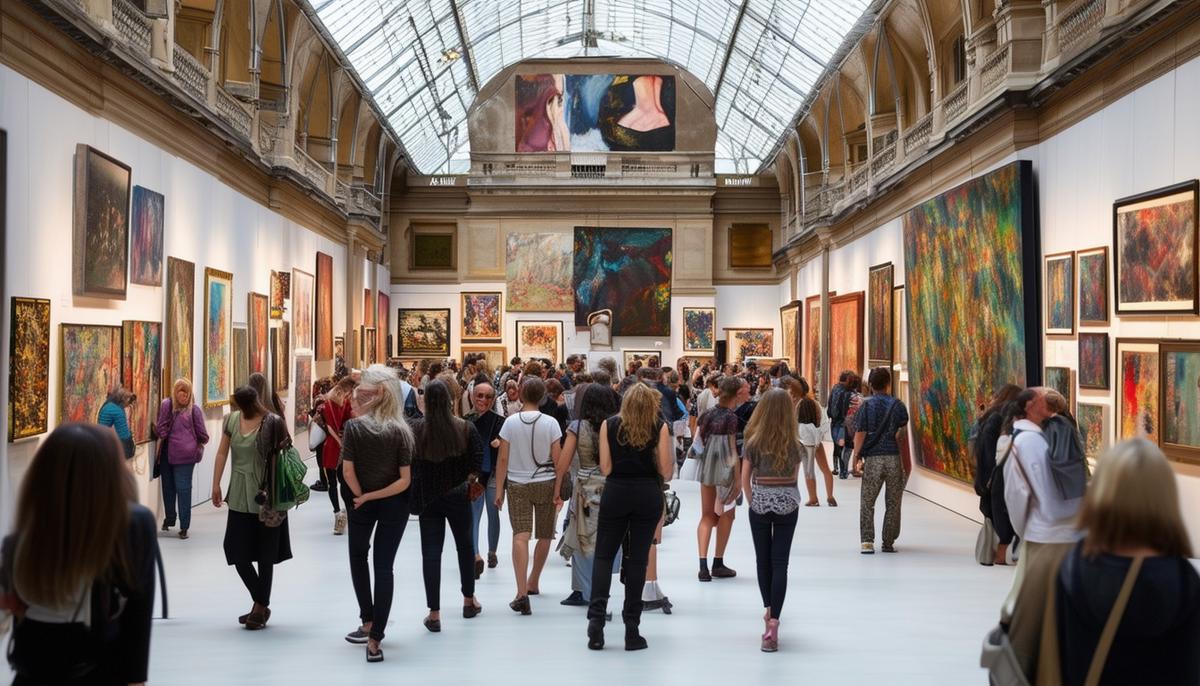
6. Dulwich Picture Gallery
Despite its seemingly modest footprint in London's leafy southern boroughs, Dulwich Picture Gallery houses an awe-inspiring collection that earns it a spot on any art lover's map. Steeped in history, and the brainchild of architect Sir John Soane, it was erected in 1817 making it the world's first purpose-built public art gallery.1 This architectural gem utilizes ingenious skylights—a characteristic Soane innovation—that bathes the artwork in ethereal light, invigorating the sweeping canvases from legends like Rembrandt, Rubens, and Gainsborough.
The Gallery's intimate scale belies the grandeur and scope of its connections to royal and scholarly pursuits, having been endowed originally from the private collections of King George III's court painters. Today, Dulwich's halls display historical artifacts and stir conversations around vintage works juxtaposed with the verve of today's art movements. Here, the dialogue between old and new is vibrant, as classical sculpture shares space seamlessly with daring temporary exhibitions.
Stepping into the Dulwich Picture Gallery often feels like stepping inside a personal treasure box where every corner turned offers an exquisite surprise. Such intimate encounters with monumental works allow for personal communications that penetrate deeper than the bustling corridors of London's larger museums.
Alongside bewitching historical narratives elaborated through landscape and portrait, the Gallery's commitment to education and public engagement is strong. Family workshops, engaging lectures, and immersive guided tours breathe additional life into Soane's carefully planned arcs and angles. Part art heaven, part lesson in incandescent design, Dulwich Picture Gallery dazzles its visitors, making luminaries of all as they stroll under its sagely-lit dome.
Dulwich Picture Gallery isn't only about feeding cultural appetites; it's an emblem reminding us that in the quiet pauses provided by shaded corners beneath a Soane skylight, one may truly commune with the souls of eras past. In Dulwich, these classical whispers echo not just through the gallery's rooms but spill into the strolling gardens outside, letting one carry a piece of historical reverie beyond its walls and back into the hum of modernity. Whether you're a seasoned patron or a budding connoisseur, within Dulwich's hallowed walls you discover not simply art, but conversations stitched through time—etched into every beam of light from its wondrously arched ceilings.
7. Barbican Art Gallery
Nestled within the brutalist architectural marvel that is the Barbican Centre, the Barbican Art Gallery stands as a bastion of contemporary creative thought, presenting exhibitions that are as daring and diverse as its concrete façade suggests. This space doesn't just display art—it challenges and reinvents perceptions of what art can be in the modern world.
As you traverse the elevated walkways approaching the Gallery, the looming towers and sprawling concrete of the Barbican estate speak of a utopian vision cast in the mid-20th century. The encapsulating environment gives a prelude to the innovative and often provocative nature encapsulated within its walls. The gallery is like stepping inside a thought experiment; with each exhibition curating not just aesthetic experiences, but forums for intellectual engagement and reaction.
A venue that is no stranger to cutting-edge installations and imaginative displays, Barbican Art Gallery is adept at staging exhibitions that turn a mirror to contemporary society. It's the kind of place where groundbreaking artists have shared narratives woven through canvases and sculptures that inevitably provoke dialogues about politics, culture, and the human condition—a realization for audiences that art can oftentimes punch lines too.
The Gallery embraces a palette of multiplicity—in form, theme, and execution. Frequent retrospectives marry the famed and the forgotten, stitching a rich tapestry with eclectic resonances that dance across decades. Walk into showcases that span photomontage extravaganzas to surreal sculptural wonders, each handpicked to disrupt and delight.
The art encountered here often rides the pulse of current societal undercurrents, spurring spectators to a confrontation with themes that resonate or wrestle internal debates. After perusing stark galleries where light conquers shadow in a movement as choreographed as a symphony, attendees often find themselves lounging by its lakeside terraces. Such settings offer reflective niches where thoughts can percolate further amidst discussions beneath Brutalist arches or before spontaneous waterside performances—the kind of multisensory experiences that underscore the gallery's importance within London's rich arts tradition.
With these bold junctions of thought broadened by curated lights and dense dialogues, the gallery turns each visit into a cultural pilgrimage, vibrant enough to pull visitors into the depths of artistic fervor. It transforms casual cultural consumption into compelling intellectual explorations, proving that within its concrete-veiled walls are harbored some of the boldest dialogues between mankind and art in the architecture of today's realm. As renditions of new forms bloom around every corner, each visit revitalizes love for the arts on platforms where philosophy meets physicality in harmonized reverence.
8. Hayward Gallery
Walking into the Hayward Gallery, you embark on a high-wire act of sensory and intellectual stimulation. Nestled within London's revered Southbank Centre, this iconic concrete landmark isn't just a sanctum for postmodern experimentation. It's a battleground where perceptions are pitted against radical artistic expressions, fostering a climate where contemporary art both thrives and throws punches.
Here, the gallery itself—designed with an austere, stark brutalism matched only by the stoic yet stirring masonry—mirrors the often formidable yet captivating exhibits it houses. The Hayward doesn't shy away from the avant-garde; rather, it pulls you into its heart with compelling presentations aimed not merely at showcasing art but at launching dialogues about form, structure, and the ephemeral nature of modernity.
Visitors find themselves clutched in the grips of exploratory exhibitions offering viewpoints that span space and echo through dimensions, crafted by artists who view the world through kaleidoscopically fractured lenses. Each curation becomes a spatial narrative, featuring pieces that resonate as deeply unsettling yet exhilarating, prodding the subconscious with the audacity of a riveting psychological thriller.
Each seasonal transformation of the gallery spaces seems to follow an architectural cadence—composed much like a cerebral orchestra tuned to a tempest's pitch. These art forms challenge, confront and often break traditional mores. Whether it's a collaborative sculpture that writhes across the gallery floors or a mesmerizing multimedia installation that plays with shadow more dramatically than any studied chiaroscuro, the exhibitions are veritable gymnasia for thinkers, aesthetes, and even the odd passerby who inadvertently stumbles into visual dialogues uncaged.
Hayward Gallery's selective embrace of curious natural light flooding through rooftop pyramids interrupts the somber gray with streaks of brilliance—a literal and metaphorical illumination of works beneath. These interplays of shadow and illumination enhance the visceral nature of the experiences provided within, illuminating not just artworks but also mining the viewer's cognitive echoes with stark flashes of clarity.
Even on exit, the residue of human engagements with these canvases of emotions consolidates reflective insights often provoked nowhere else. Talks and lectures that grace the Haywood occasionally pierce even deeper, threading audiences to the very pulse of artistic intent.
Indeed, the Hayward Gallery does not simply house art; it enshrines dynamic confrontations between what's felt and what's known, scribing a bold note in the margins of London's cultural diary that captures both the history and prophecy of contemporary creativity. Thus, a check-in here is an encounter with liminality—to walk through its imposing glass doors is to participate in a lucid dream sketched by those crafting tomorrow's artistic realms.
9. Victoria Miro Gallery
Victoria Miro Gallery finds its home nestled amidst the artistic hustle of East London, a discrete giant in contemporary art with spaces that span the renovated 1920s furniture factory to an enchanted waterside garden. Established during an era of artistic dynamism, its name is now synonymous with avant-garde artworks and some of the most persuasive conversations happening in the art world today.
This revered gallery presents a modern tableau in itself; walk within and the façade dissembles to usher spirited offerings from around the globe, from pioneering figures like Yayoi Kusama whose mirror rooms fill chambers with echoes of poetic vibrancy, to Chris Ofili's applications of color smeared across dimensions of darkness with startling sensuality. Traditional canvases are merely the prologue in this repository where textural anarchies and the nexus of novel materials meet swinging conceptual pendulums.
Victoria Miro choreographs a sophisticated symphony with emerging artists grasping torches held high by veterans. These presentations compellingly echo through vast regions of powerful contemporary statements that imbue visitors with novel lenses, bewitching them to gaze afresh at the familiar mundane sprawl. Invitation to private views or nocturnal events feature immersive spectacles where thin veils between art appreciator and creator blur into the immersive reverie shared beneath London skies.
Here landscapes become artifacts mounted poignantly by jovial whispers between modern lines and classic contours, promising voyages on a nuanced brush stroke or sculpture curve—that can transmutate seasons within mere steps. Rendering art tangibly personal, trips and artist talks yield space for questioning both soul and cosmos against the vast backdrops of exalted installations that transmit you into a sensory blossom more real than surreal.
Exhibiting a knack happens not just within walls – it lushly treads out into the embracing garden transforming it into mother nature's unconventional gallery under open skies with installations harmonized delicately within the residency of wavering leaves and scampering light critiqued by lucid petals making compelling physiological critiques lacing the profound atmosphere with wonder.
Lingering within Victoria Miro illuminates an orchestration where escalating dialogues about race, ubiquity or feminism emanate in complex palettes spanning thoughtful multidisciplinary artifacts carefully adorned by her stellar roster of artists touching on cornerstones prodded by few, thus making the panoramic trip a transformative pilgrimage often triggering momentous syllables comparatively sitting silhouetted canvas chums back into their contemplative abyss. Ever innovative, ceaselessly pontificating upon the dynamics of plug, gender, matrix or ether, ferrying apace flat titans across astral tribute trestles—Victoria Miro steers the gallant vessel through vehement art seas diligently checkpointed across London's effervescingly vibrant artscape ever inviting ever inspiring disarmingly ever curious to all aboard the unparalleled ark.
10. The Photographers' Gallery
The Photographers' Gallery, located near Oxford Circus in London, is Britain's premier hub for contemporary photography. Since 1971, the gallery has been dedicated to showcasing the full spectrum of photographic practices, serving as a pivotal platform for innovative and critical works from both international and domestic photographers.
Visitors can explore multiple floors of continuously changing exhibitions, featuring a wide range of photographic styles and subjects, from photojournalism and landscapes to portraits. The gallery's redesigned space, with its crisp, white-canvas feel and welcoming ambience, enhances the viewing experience and allows the photographs to take center stage.
Beyond exhibitions, The Photographers' Gallery is also a space for rigorous debate and learning. The gallery hosts:
- Talks by photographers
- Interactive workshops
- Events that foster discussions about the future of photography
Visitors can mingle at private views or attend digitally-focused seminars, creating a vibrant community of artisans and admirers.
The gallery's shop offers evocative prints and beautifully bound books, allowing visitors to take home a piece of the magic stirred during their visit. Every purchase supports the gallery's mission to celebrate and challenge contemporary photographic art.1
As an essential beacon for those drawn to the power and poetry of photography, The Photographers' Gallery invites viewers to perceive the world anew through the lenses of talented artists, making it a critical snapshot of contemporary culture caught in real-time.
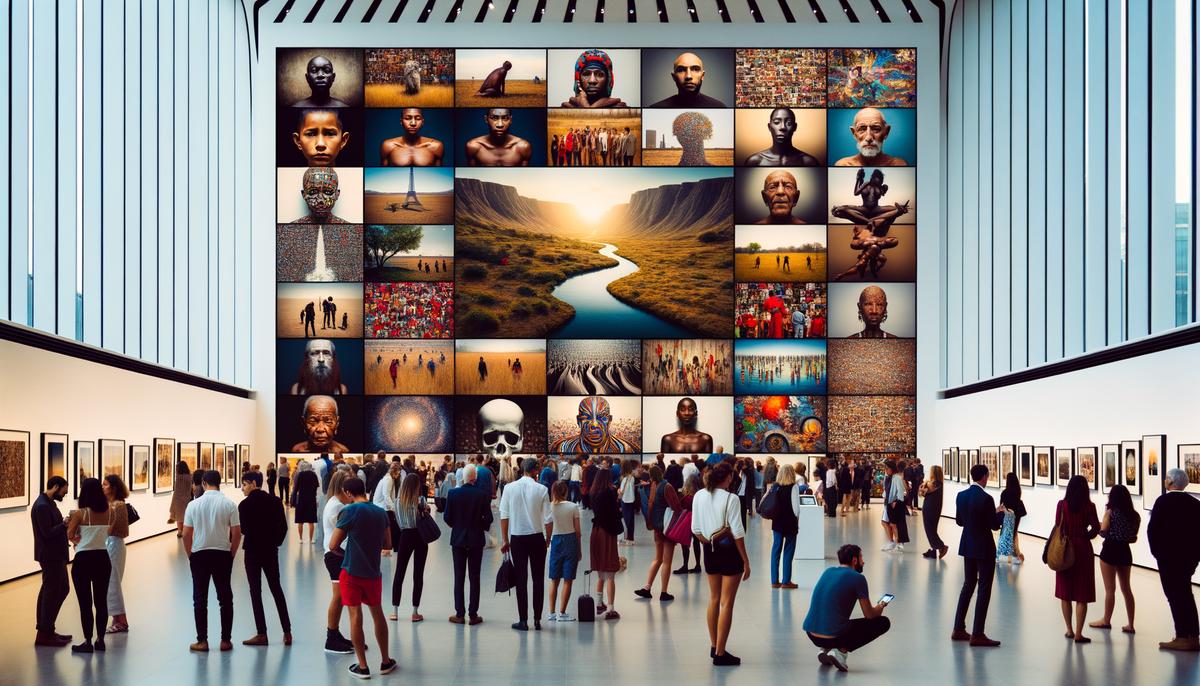
London's galleries are dynamic arenas where history, culture, and creativity converge, fostering dialogue and deepening our understanding of both art and society.






















